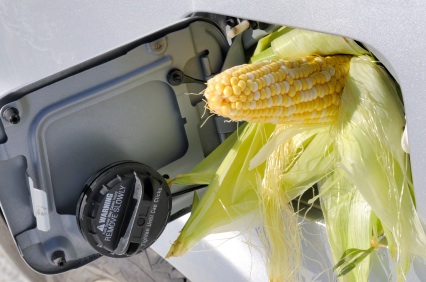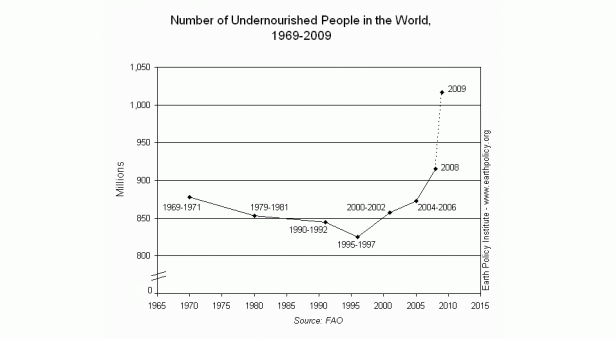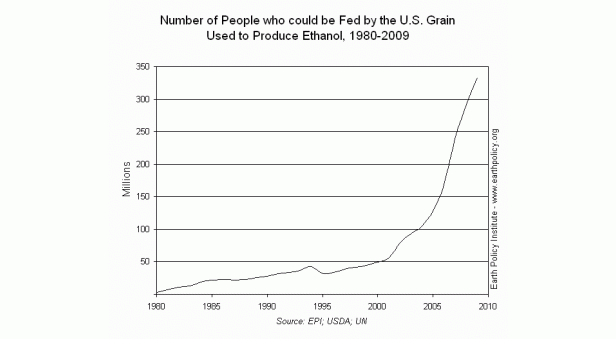The 107 million tons of grain that went to U.S. ethanol distilleries in 2009 was enough to feed 330 million people for one year at average world consumption levels. More than a quarter of the total U.S. grain crop was turned into ethanol to fuel cars last year. With 200 ethanol distilleries in the country set up to transform food into fuel, the amount of grain processed has tripled since 2004.
The United States looms large in the world food economy: it is far and away the world’s leading grain exporter, exporting more than Argentina, Australia, Canada, and Russia combined. In a globalized food economy, increased demand for food to fuel American vehicles puts additional pressure on world food supplies.
From an agricultural vantage point, the automotive hunger for crop-based fuels is insatiable. The Earth Policy Institute has noted that even if the entire U.S. grain crop were converted to ethanol (leaving no domestic crop to make bread, rice, pasta, or feed the animals from which we get meat, milk, and eggs), it would satisfy at most 18 percent of U.S. automotive fuel needs.
When the growing demand for corn for ethanol helped to push world grain prices to record highs between late 2006 and 2008, people in low-income grain-importing countries were hit the hardest. The unprecedented spike in food prices drove up the number of hungry people in the world to over 1 billion for the first time in 2009. Though the worst economic crisis since the Great Depression has recently brought food prices down from their peak, they still remain well above their long-term average levels.
The amount of grain needed to fill the tank of an SUV with ethanol just once can feed one person for an entire year. The average income of the owners of the world’s 940 million automobiles is at least 10 times larger than that of the world’s 2 billion hungriest people. In the competition between cars and hungry people for the world’s harvest, the car is destined to win.
Continuing to divert more food to fuel, as is now mandated by the U.S. federal government in its Renewable Fuel Standard, will likely only reinforce the disturbing rise in hunger. By subsidizing the production of ethanol, now to the tune of some $6 billion each year, U.S. taxpayers are in effect subsidizing rising food bills at home and around the world.
For more information on the competition between cars and people for grain, see Chapter 2 in Plan B 4.0: Mobilizing to Save Civilization (New York: W.W. Norton & Company, 2009), on-line for free downloading with supporting datasets.






